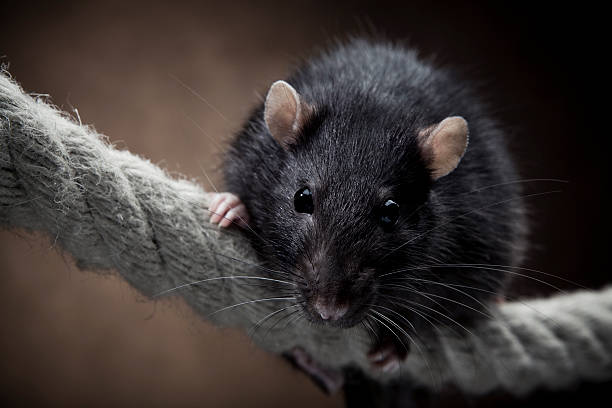Mycoplasmosis is the most common respiratory disease in rats. Read here how to prevent an outbreak of the disease in your rat, how to recognize the disease, and what the chances of a cure are.
Mycoplasmosis is a very common disease of rats and the most common respiratory disease. The causative agent of the disease, mycoplasma, is usually transmitted by the mother rat to her offspring. But transmission through the breathing air or the environment is also known.
Not every rat infected with mycoplasma gets sick. Most animals remain healthy even though they carry the pathogen. Unfortunately, when mycoplasmosis breaks out in a rat, its chances are slim. Read how to recognize mycoplasmosis and prevent an outbreak in your rat here.
Symptoms of mycoplasmosis in rats

At the beginning of the disease, the rat sneezes, and sniffs. The sneezing attacks are piling up and every now and then you can see a little thin nasal discharge. The pathogen later attacks the bronchi and lungs. The animal begins to suffer from shortness of breath.
Overall, the rat feels uncomfortable. Side effects and other symptoms of mycoplasmosis can be:
- shaggy, unkempt fur
- Loss of appetite, emaciation
- ear infection
- reddish-brown smeared and sticky eyes
The red adhesions on the eyes come from fluid from the Harderian glands on the eye. Some rats also develop a severe ear infection that causes head tilt and movement disorders. In these late stages of the disease, there is little the vet can do to help the rat.
Treatment of mycoplasmosis in rats
If at all, only antibiotic treatment at a very early stage of mycoplasmosis in rats has any chance of success. But even with early treatment, the pathogen is not completely destroyed and relapses can occur again and again. That is why prevention is so important.
Even after successful antibiotic therapy, you should keep a close eye on your rat. If necessary, another dose of antibiotics must follow, since often not all bacteria are destroyed.
Rats infected with mycoplasma do not necessarily get sick. It has been established that only certain factors trigger the disease. This includes:
- stress
- wrong diet
- high levels of ammonia in the air
- temperature fluctuations
- draft
Prevent outbreaks of mycoplasmosis

Proper husbandry and feeding can greatly reduce the risk of contracting mycoplasmosis. Stress should also be avoided. Rats feel stressed, for example, by transport, too many conspecifics in a narrow cage or the like.
Newly purchased animals should be isolated from the other animals for at least two weeks and closely observed before socialization.
The feed for the animals must not be too fatty or high in calories. With plenty of fresh fruit and vegetables, the rats get the vitamins they need. Cages must be cleaned regularly to keep ammonia levels low. Ammonia is a toxic gas that escapes from urine residue.
Finally, the animals should be kept in a room with relatively stable temperatures. If all of this advice is followed, the rats are not completely immune to the disease, but they are at least partially protected from it.